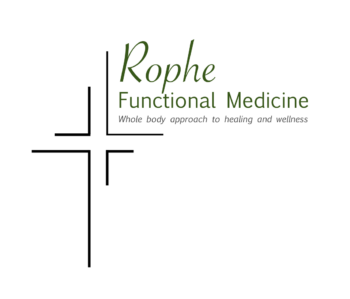Vitamin D, what many people may think of as the “sunshine vitamin”, has been increasingly on the radar as to its vital importance to a multitude of bodily functions123. Without adequate vitamin D, the body is unable to properly absorb the calcium needed for strong bones4. Low vitamin D levels can also contribute to stiffer blood vessels and increased risk of high blood pressure and cardiovascular disease5. Low levels can affect thyroid health, contribute to depression, bone loss, and impede the body’s natural ability to respond to infection and chronic inflammation56.

Vitamin D is found in many foods that we eat, such as salmon, eggs, many mushrooms, and fortified dairy and fortified plant-based milk. Of course, one of the best sources of vitamin D is sunshine6. However, this certainly has to be balanced with skin cancer risks, and can be challenging for folks living in northern hemispheres of the United States, or in highly polluted areas that shade the sun.

Importantly, lack of sunshine is only one contributor to low vitamin D levels. There is a correlation between obesity and low vitamin D levels, although it is not fully known what optimal supplementation level is needed to achieve appropriate active levels of circulating vitamin D7. Issues such as Crohn’s disease, ulcerative colitis, celiac disease, age, ethnicity, history of bariatric surgery, chronic gastritis, certain medications, and poor gut health from an overly process diet, can also contribute to inadequate absorption of vitamin D58. Further, this can also cause a deficiency in a multitude of other vitamins and minerals that are essential for regulating our body’s systems and controlling chronic inflammation6.
But what is an optimal level of vitamin D? Medical professionals have long known of vitamin D’s importance. Yet, it’s often overlooked during an annual exam and not routinely tested for in many cases. Depending on a particular lab, normal values are generally considered to be between 30 and 100 ng/mL9.
However, a vitamin D level of 35 might be “normal” but is it optimal? Functional medicine experts suggest optimal levels should reside somewhere between 50 and 80 ng/mL depending on the inidividual. Yes, vitamin D toxicity can occur with very high vitamin D supplementation, although this is rare in comparison to the chronically low vitamin D levels that often exist today. Traditional recommendations are Vitamin D3 supplementation from 400 to 800 units of vitamin D3 daily, although in many cases, this is not adequate to bring a person up to optimal levels. It is generally thought that anything at or less than 5,000 units daily is safe, although much higher short-term doses may be needed for somebody with extremely low levels of vitamin D49. However, supplementation requires an individual approach that considers an individual’s unique needs, risk factors, response to supplementation, and a combination of other lifestyle interventions through adequate nutrition, exercise, sleep, and other supplements and medications6.

If vitamin D levels were more carefully considered on an individualized basis as part of a comprehensive treatment plan, it could prevent some of the polypharmacy that is often the first “go to” to for presenting conditions, if nutrition imbalances were first optimized. Many medical insurance companies will cover vitamin D lab testing if there is a risk of low levels or reduced absorption of this key nutrient. Remember to ask your provider about your vitamin D levels, particularly in the presence of IBD, IBS, chronic gastritis, bariatric surgical history, obesity, thyroid, disease, osteopenia, depression, reduce energy, or other mood concerns, especially if exposure to natural sunlight is limited.
Remember that optimizing vitamin D levels is not a lone cure for chronic conditions, but coexists with other lifestyle factors, such as adequate sleep, a non-processed whole food diet, regular movement, stress reduction, and mental and spiritual health. Traditional medicine has its value in treating many conditions, but it should never be a substitute for treating the root causes that may be contributing to those conditions in the first place. Want to learn more? Check out my blog post on functional medicine!
1. Fakheri RJ. Vitamin D Supplementation: To D or Not to D? Mayo Clinic Proceedings. 2024;99(4):529-533. doi:10.1016/j.mayocp.2024.01.003
2. Sha T, Wang Y, Zhang Y, et al. Genetic Variants, Serum 25-Hydroxyvitamin D Levels, and Sarcopenia: A Mendelian Randomization Analysis. JAMA Network Open. 2023;6(8):e2331558-e2331558. doi:10.1001/jamanetworkopen.2023.31558
3. Bluher AE, Kearney T, Vazifedan T, Baldassari CM. Vitamin D Deficiency and Pediatric Obstructive Sleep Apnea Severity. JAMA Otolaryngology–Head & Neck Surgery. 2025;151(1):72-77. doi:10.1001/jamaoto.2024.3737
4. Sfeir JG, Drake MT, Khosla S, Farr JN. Skeletal Aging. Mayo Clinic Proceedings. 2022;97(6):1194-1208. doi:10.1016/j.mayocp.2022.03.011
5. Rebelos E, Tentolouris N, Jude E. The Role of Vitamin D in Health and Disease: A Narrative Review on the Mechanisms Linking Vitamin D with Disease and the Effects of Supplementation. Drugs. 2023;83(8):665-685. doi:10.1007/s40265-023-01875-8
6. Mavar M, Sorić T, Bagarić E, Sarić A, Matek Sarić M. The Power of Vitamin D: Is the Future in Precision Nutrition through Personalized Supplementation Plans? Nutrients. 2024;16(8):1176. doi:10.3390/nu16081176
7. Tobias DK, Luttmann-Gibson H, Mora S, et al. Association of Body Weight With Response to Vitamin D Supplementation and Metabolism. JAMA Netw Open. 2023;6(1):e2250681. doi:10.1001/jamanetworkopen.2022.50681
8. Luttmann-Gibson H, Mora S, Camargo CA, et al. Serum 25-hydroxyvitamin D in the VITamin D and OmegA-3 TriaL (VITAL): Clinical and demographic characteristics associated with baseline and change with randomized vitamin D treatment. Contemporary Clinical Trials. 2019;87:105854. doi:10.1016/j.cct.2019.105854
9. Williams SE. Vitamin D supplementation: Pearls for practicing clinicians. Cleve Clin J Med. 2022;89(3):154. doi:10.3949/ccjm.89a.21021
